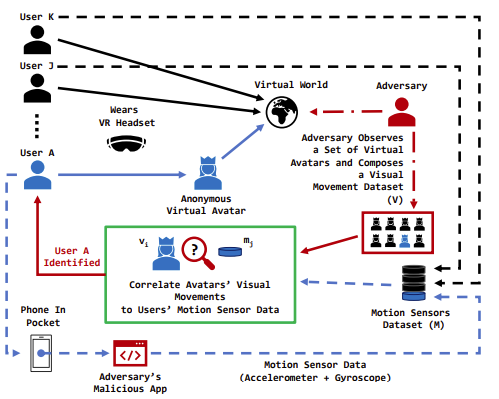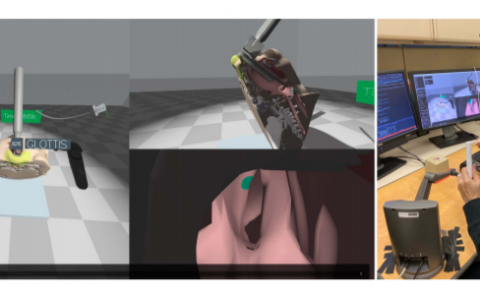Exploiting Out-of-band Motion Sensor Data to De-anonymize Virtual Reality Users
PubDate: Jan 2023
Teams: University of Texas at San Antonio;Liberal Arts and Science Academy;University of Oklahoma
Writers: Mohd Sabra, Nisha Vinayaga Sureshkanth, Ari Sharma, Anindya Maiti, Murtuza Jadliwala
PDF: Exploiting Out-of-band Motion Sensor Data to De-anonymize Virtual Reality Users

Abstract
Virtual Reality (VR) is an exciting new consumer technology which offers an immersive audio-visual experience to users through which they can navigate and interact with a digitally represented 3D space (i.e., a virtual world) using a headset device. By (visually) transporting users from the real or physical world to exciting and realistic virtual spaces, VR systems can enable true-to-life and more interactive versions of traditional applications such as gaming, remote conferencing, social networking and virtual tourism. However, as with any new consumer technology, VR applications also present significant user-privacy challenges. This paper studies a new type of privacy attack targeting VR users by connecting their activities visible in the virtual world (enabled by some VR application/service) to their physical state sensed in the real world. Specifically, this paper analyzes the feasibility of carrying out a de-anonymization or identification attack on VR users by correlating visually observed movements of users’ avatars in the virtual world with some auxiliary data (e.g., motion sensor data from mobile/wearable devices held by users) representing their context/state in the physical world. To enable this attack, this paper proposes a novel framework which first employs a learning-based activity classification approach to translate the disparate visual movement data and motion sensor data into an activity-vector to ease comparison, followed by a filtering and identity ranking phase outputting an ordered list of potential identities corresponding to the target visual movement data. Extensive empirical evaluation of the proposed framework, under a comprehensive set of experimental settings, demonstrates the feasibility of such a de-anonymization attack.



